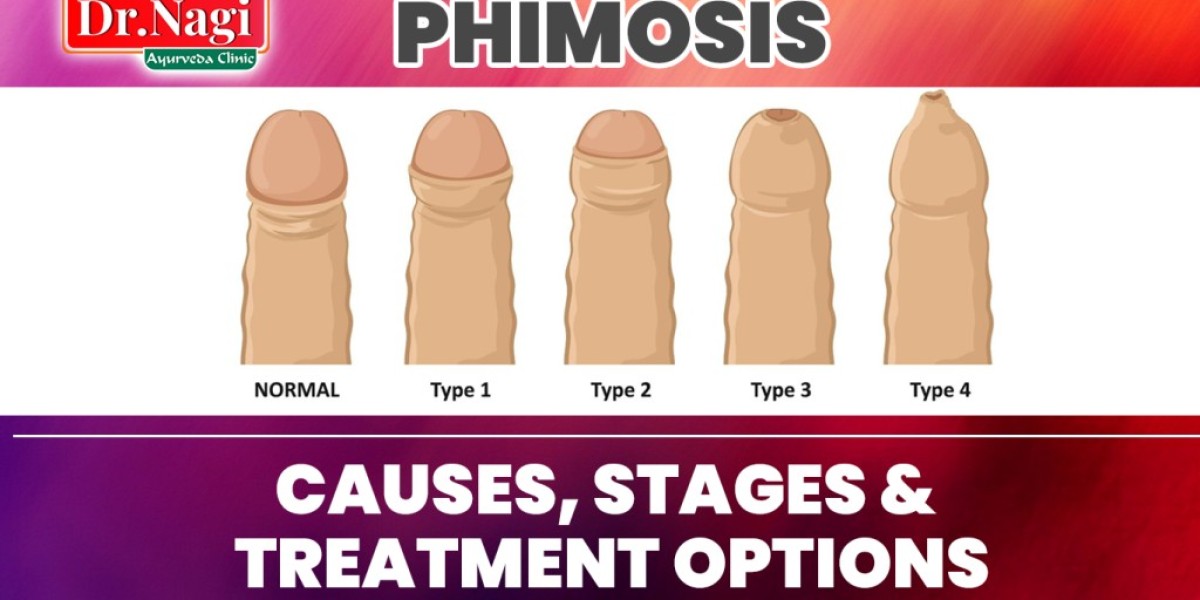Phimosis is a condition where the foreskin cannot be easily pulled back from the head of the penis. It can cause discomfort and urinary issues, but awareness of symptoms and timely treatment can prevent complications. Along with direct treatment for phimosis, strengthening your pelvic floor muscles through Kegel exercise plays an important role in improving sexual health and urinary control.
Dr. Nagi, an expert in urology and sexual health, explains the causes and symptoms of phimosis and how Kegel exercises can support your recovery and well-being.
What is Phimosis?
Phimosis occurs when the foreskin is too tight and cannot retract without difficulty. There are two forms:
Physiological Phimosis: Present from birth, often resolves naturally by adulthood.
Pathological Phimosis: Develops due to infection, injury, or inflammation; may require medical treatment.
Stages and Symptoms of Phimosis
Phimosis progresses through four stages—from mild discomfort with partial foreskin retraction to severe tightness causing pain, swelling, and urinary issues. Symptoms include:
Painful or impossible foreskin retraction
Difficulty urinating or ballooning of the foreskin
Recurring infections and inflammation
Pain during erections or intercourse
Early detection is crucial for successful management.
Treatment Options for Phimosis
Home Care and Exercises
After warm baths, gently stretch the foreskin daily without forcing it
Use steroid creams prescribed by your doctor to soften skin
Maintain hygiene with lukewarm water; avoid harsh soaps
Treat infections promptly with medication
Ayurvedic Treatment
Ayurveda helps reduce swelling and improves skin elasticity through herbal oils, anti-inflammatory pastes, and dietary advice. Dr. Nagi offers bespoke Ayurvedic treatment plans.
Surgical Options
Circumcision: Complete removal of the foreskin under sedation; permanent cure.
Preputioplasty: Minimally invasive surgery to loosen the foreskin while preserving it.
How Kegel Exercise Supports Phimosis Treatment
Kegel exercise strengthens the pelvic floor muscles—the muscles supporting the bladder and reproductive organs. These muscles are essential for bladder control and sexual health. Strengthening them can:
Improve bladder function and reduce urinary problems caused by phimosis
Enhance erection control and sexual stamina in men
Support pelvic stability and reduce discomfort during intercourse
Promote faster recovery after surgical interventions
How to Perform Kegel Exercise
Follow these simple steps:
Identify pelvic floor muscles by stopping the flow of urine midstream.
Contract the muscles and hold for 5 seconds, then relax for 5 seconds.
Repeat 10-15 times per session.
Practice 3-4 times daily.
Consistency and correct technique are key to effectiveness. Avoid tightening nearby muscles or holding your breath.
Why Consult Dr. Nagi?
Dr. Nagi combines modern medicine and Ayurveda to offer thorough diagnosis and personalized treatment for phimosis and related pelvic health concerns. His holistic approach includes:
Detailed assessment of your condition
Personalized Kegel exercise guidance to enhance recovery
Safe, confidential treatment plans tailored for your needs
When Should You See a Doctor?
Seek medical advice if:
Retraction is painful or impossible despite home care
Urination is difficult or painful
Frequent infections or scarring occur
Discomfort persists during sexual activity
Early intervention ensures better management and reduces complications.
Take Charge of Your Pelvic and Sexual Health Today!
Phimosis doesn’t have to affect your confidence or quality of life. Coupled with proper medical care, Kegel exercises can strengthen your pelvic muscles, support bladder control, and improve sexual health.
Contact Dr. Nagi today for expert guidance, personalized treatment, and supportive care. Your journey to better pelvic health and wellbeing starts here.






